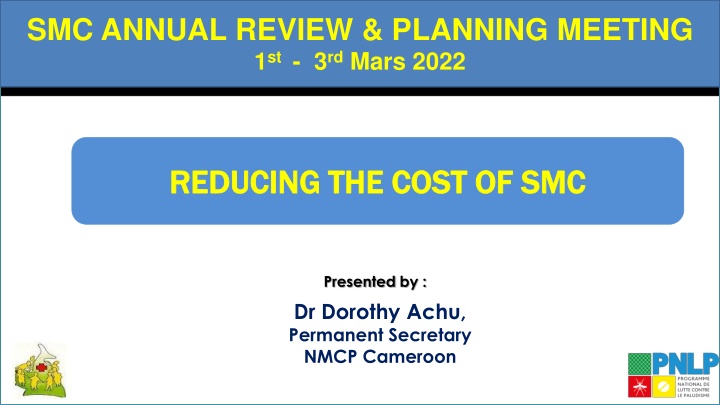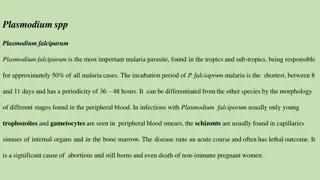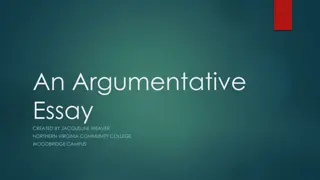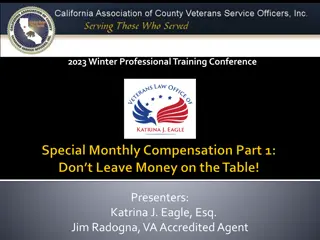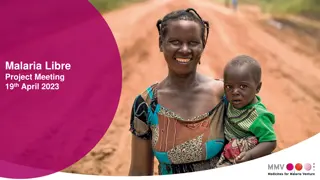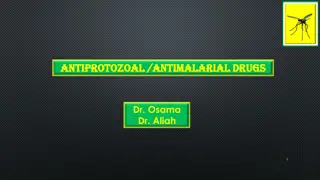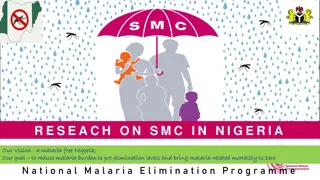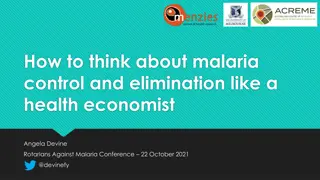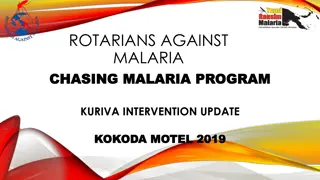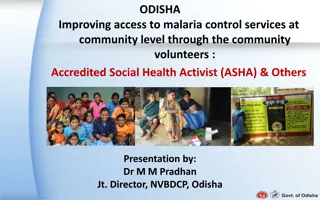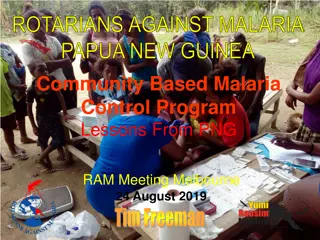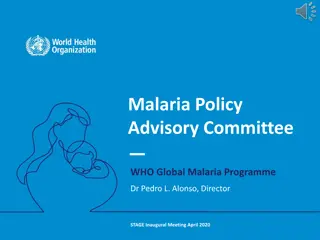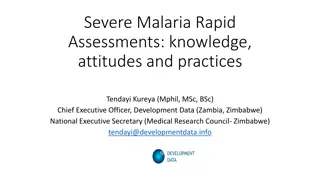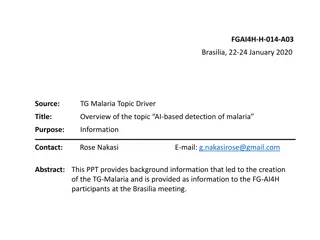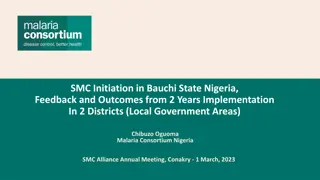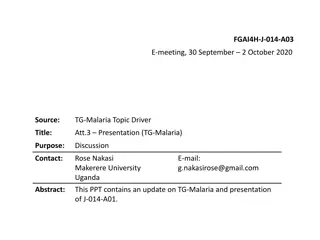Strategies to Reduce Costs in SMC Implementation for Malaria Control
SMC implementation faces challenges of escalating costs, necessitating cost-effective approaches. Despite the effectiveness of SPAQ, rising resistance markers call for newer, pricier drugs. Understanding cost drivers and trends, exploring routine distribution modes through existing community health workers, are vital steps highlighted in the progress report and planning meeting. The session aims to strategize on reducing SMC costs while ensuring effective coverage.
Download Presentation

Please find below an Image/Link to download the presentation.
The content on the website is provided AS IS for your information and personal use only. It may not be sold, licensed, or shared on other websites without obtaining consent from the author.If you encounter any issues during the download, it is possible that the publisher has removed the file from their server.
You are allowed to download the files provided on this website for personal or commercial use, subject to the condition that they are used lawfully. All files are the property of their respective owners.
The content on the website is provided AS IS for your information and personal use only. It may not be sold, licensed, or shared on other websites without obtaining consent from the author.
E N D
Presentation Transcript
ATELIER DE RELECTURE ET DE VALIDATION DU RAPPORT DE PROGRES (PUDR) AU DEUXIEME SEMESTRE DE LA NOTE CONCEPTUELLE PALUDISME 2021-2023, Mbalmayo, du 08 au 10 f vrier 2022 1st - 3rdMars 2022 SMC ANNUAL REVIEW & PLANNING MEETING REDUCING THE COST OF SMC REDUCING THE COST OF SMC Presented by : Dr Dorothy Achu, Permanent Secretary NMCP Cameroon
PLAN PLAN Introduction Drivers of cost in SMC Cost trends with current strategy Perspectives to reduce cost
INTRODUCTION INTRODUCTION SMC implementation started in a project mode with high costs related to training, M&E and research but has been scaled up into national strategies requiring more cost-effective approaches Funding for SMC as for other malaria interventions has not inceased significantly over the past 10 years meanwhile guidelines for SMC are becoming more flexible requiring coverage of more geographic zones (longer seasons) and other age-groups at risk Although SPAQ still remains effective in several countries, the increase in the prevalence of resistance markers may lead to reduce efficacy of the drug and thus requiring new drugs which are more expensive
DRIVERS OF COSTS DRIVERS OF COSTS Distribution of operational costs in 2020 Number of actors (training and payment) Number of cycles Duration of each cycle Strategy (door-to-door vs fixed) DOT Supervision Additional material (chalk, cards, Training communication Other commodities Monitoring & evaluation markers, cups, spoons .) Motivation of actors
COST TRENDS WITH CURRENT STRATEGY Year Number Eligible Districts* 2016 2017 2018 2020 2021 45 45 45 45 46 Number of cycles 3 4 4 4 4 Target 1,387,534 1,549,250 1,611,831 1,684,428 1,724,859 Total funded (USD) 3,889,166 5,114,204 5,259,300 4,279,675 3,459,995 2.8 3.3 Cost per child treated 3.3 2.5 2.0
PERSPECTIVES TO REDUCE COST: ROUTINE MODE 12 health districts Mobilization and distribution will be carried out by the existing CHW assisted by a distributor depending on his/her workload Door-to-door distribution that will last four to seven days (depending on the number of CHWs and the target catchment population) DOT on first dose 50 eligible children to be treated per day Mobilization / children enumeration Carried out only in cycle 1 and will last 5 days The CHW will update of the household count (regular activity of CHWs), with inclusion the number of children aged 3 to 59 months counted Supervision The health district, health areas and health facility staff will lead the supervision of CHWs (fewer proximity supervisors)
ADVANTAGES OF THE ROUTINE SMC Strengthening the ownership of the SMC by the health districts and local communities for sustainability Implementation of SMC beyond four months for health district long transmission period, with minimum operations and affordable costs Strengthening malaria case management during SMC: CHWs will be able to screen and treat malaria cases in febrile children during household visits Payment of actors is facilitated: since the CHWs are already registered in the payment system, The reduction of the number of actors leads to a reduction of the cost the SMC
BUDGET CAMPAIGN VS BUDGET ROUTINE CAMPAIGN 2021 Total Budget: US $ 3,459,995 CAMPAIGN + ROUTINE 2022 Total budget: US $ 3,170,818 With consideration of 5 cycles in 3 health districts Final budget will show up the gain of the routine strategy
THANKS THANKS
